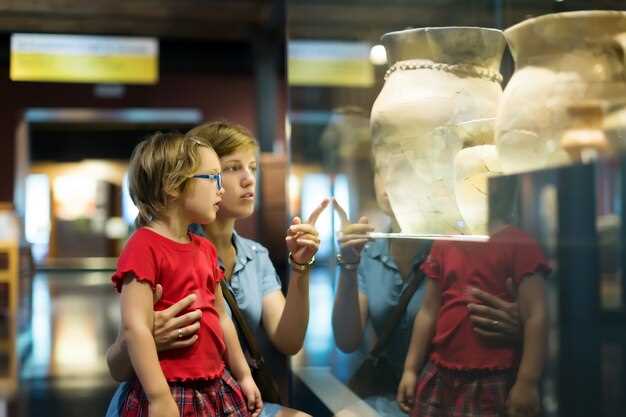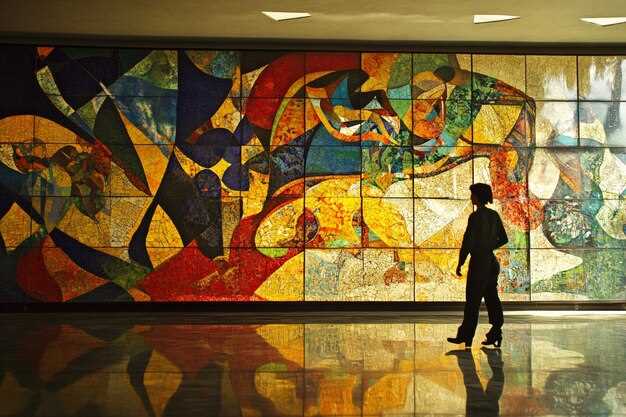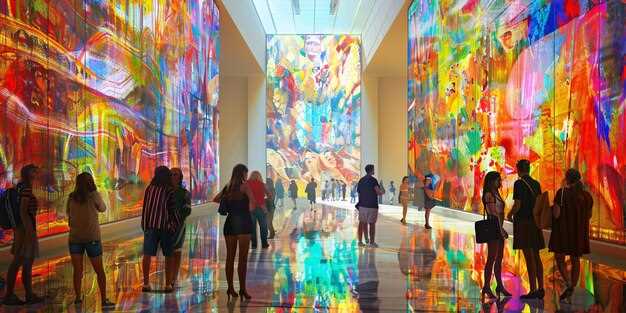
Visit ikono and their untitled installation in Berlin and book your trip around it. This field-focused experience introduces a dialogue between 20th-century references and contemporary methods, and during a single visit you’ll encounter artworks that feel intimate yet expansive, provided by a network of museums and their institutions.
In Tokyo, the Mori Building Digital Art Museum presents motion-sensitive rooms that react to visitors’ movements, creating a fluid field of light and color. Plan about 90 minutes to traverse five gallery zones; the environments are digitally produced and shift as you move, delivering a close, immersive encounter. Expect tickets around $25–$35, with higher demand on weekends.
In New York, MoMA blends 20th-century masterpieces with contemporary digital pieces across three floors, presenting about 40 artworks. Several installations invite close observation and simple participation from visitors, inviting them to interact with the pieces where possible. If you plan to visit multiple venues in the area, set aside 2–3 hours for this block of the itinerary.
London’s Tate Modern anchors a survey that frames postwar experimentation in painting, sculpture, and media. The show foregrounds realities that shift with lighting and sound, inviting you to move through rooms that almost feel like city streets. Expect 60–90 minutes for the core circuit; those who have time can extend with a café break or a quick detour to nearby galleries.
Centre Pompidou in Paris presents a compact traversal from late 20th-century video works to current digital installations, with a focus on how institutions provide space for experimentation. The layout rewards careful viewing; most visitors spend 90 minutes to two hours, especially if you pause to read wall texts and watch longer sequences.
Madrid’s Reina Sofía hosts a cross-section of European avant-garde and contemporary practice, including large-scale installations that require walking through vast spaces. The show includes several untitled pieces and explores how realities shift when the viewer moves through light and sound. Plan about 2 hours for a thorough pass.
In Milan, Pirelli HangarBicocca stages a large-scale installation that fills a hall and invites you to move through a field of artworks. The piece blends light, sound, and time-based media to create shifting realities and a sense of presence. Expect 75–90 minutes for the circuit, and plan to pair the visit with a stroll through the design district.
In Sydney, AGNSW curates immersive experiences that connect indigenous and contemporary practices, inviting you to actively move through space. The program provides a space to reflect on how artworks realize new realities and how institutions can broaden access. Plan to visit the main galleries for about 2 hours, then enjoy a harbor-side stroll to close the day.
Practical planning framework for exploring the year’s top exhibits plus MAV Ercolano
Plan a four-day route anchored by MAV Ercolano, with two nearby venues for contrast, and reserve timed slots for the most popular rooms two weeks ahead.
Adopt a four-part framework: time, locations, experiences, and communication with galleries. For each day assign one immersive exhibit, one room-based installation, and a natural or ocean-themed space to balance pace and perceptions.
Leverage projections from savilles analytics to forecast crowd levels and available slots, then adjust the route to avoid peak times during koreas displays and the Picasso rooms. This helps keep experiences fluid and accessible.
Create a clean route map by locations: start at MAV Ercolano, move to palais, then oslos, and finally the outdoor or ocean-themed spaces; build in 15–20 minute breaks and longer pauses at rooms with natural light. Track time and keep a running list of each room’s features to compare impressions.
Collaborate with curators John and Jenny for previews, access to interactive elements, and context that clarifies perceptions of works by Picasso and contemporary installations. Ask for behind-the-scenes notes on how interact moments were designed.
Tip: carry a compact notebook or device to record quick notes after each stop; use a simple table on arrival to adjust sequence based on available times.
| Localização | Exhibition / Event | Duration (min) | Notes |
|---|---|---|---|
| MAV Ercolano | Monumental Picasso Rooms | 75 | immersive, interactable; check available slots |
| palais | Koreas Installations | 60 | popular; reserve early; sensory spaces |
| oslos | Ocean & Natural Landscapes | 90 | monumental scale; plan buffer for photo stops |
| data hub savilles | Analytics-driven Quick Tour | 45 | use projections to adjust route, align with time |
Exhibit Snapshot: name, location, dates, and ticket basics
Buy online timed-entry tickets to guarantee a slot and skip the line at the Tribeca venue.
- Name: Letters & Bloom: Normandy Scene by Jenny
- Location: Tribeca Art House, 350 West Broadway, Tribeca, New York
- Dates: May 12 – September 21, 2025; Tue–Sun 10:00–18:00; last entry 17:00; closed Mondays
- Ticket basics: General admission $22; Student/Senior $14; Children under 6 free; online timed-entry required; groups of 8+ receive 15% off; rotating installations across 5 rooms; outside courtyard installation available daily
In these rooms, the show blends letters and painting to form a Normandy Scene that invites the viewer to follow a road through Jenny’s vision. The master painter uses mirrored surfaces and bloom tones to reflect emotions in the space, guiding attention from one corner to the next. The layout favors a walk-through experience rather than a single stand-alone piece, encouraging a dialogue between the work and the observer.
Tips for a smooth visit:
- Secure tickets online to lock a preferred time; weekend slots fill quickly.
- Allocate about 90 minutes to explore all five rooms and the outside courtyard piece.
- Check the presentation schedule for talks with international artists; a guest from tottenham is slated for an evening session.
- Photography is allowed without flash in most areas; respect any restricted sections during the rotation.
Theme Highlights: core works and why they matter to travelers
Opened this season, the gustav installation on the boston garden walls presents three distinct experiential works that reward careful looking and planning. Made by a boston collective, it threads heritage motifs with making and invites hand-crafted textures to be explored. The piece breaks the convention by mixing sculpture, projection, and live sound in one outdoor setting.
Travelers could plan a compact loop: boston, miami, and the walker-space, leaving time for coffee and street music. A short break between stops helps absorb what you see and keeps momentum without fatigue.
-
Gustav installation in Boston: opened on the garden walls, this three-part presentation blends heritage with making, featuring hand-crafted textures and participatory cues. The sequence enhances your sense of place and rewards a 45-minute stroll through murals, sculpture, and ambient music.
-
The walker-space feature: Jasper’s batik textures run along long walls while John’s live music threads through the room. Three zones invite quick interaction and short breaks, turning the space into a social hub with seating and a note wall.
-
Miami digital chapter: large screens project a music-infused narrative that celebrates local craft. The long-form sequence unfolds across outdoor blocks, inviting a lingering experience and easy overlap with nearby cafes and street performances.
-
Outernet and festival notes: the outernet network streams short talks and performances from the society of artists, offering context without a detour. Bring a friend to compare impressions and map the next stops, and celebrate the scene with fellow travelers.
Visit Logistics: hours, closures, transport tips, and accessibility

Plan two nearby stops per day and allocate 60-90 minutes per exhibit, plus 15 minutes for transit. This approach suits traveling shows with works across londons venues, in germany, and at the Whitney, combining surrealism, natural installations, and walls-filled displays. Create a quick list of named artists and title keywords to guide you through the parts of the show, so you can spot a piece that uses robots or features a maqam-inspired soundscape.
Theres no substitute for checking official sites 24-48 hours ahead for hours and closures; in july many venues extend late hours, while some close on certain days for maintenance. There are occasional private events that briefly restrict access, so study the entrance locations on a map and note where to start if you’re chasing a specific exhibit. If a program includes emily’s works or death-themed pieces, mark their rooms so you won’t miss them.
Transport tips: use city transit passes and tap-to-pay cards; most galleries cluster near major stations, and a 10-20 minute walk between sites is common. In londons and other hubs, you can group two or three venues in a single route to minimize transfers. For longer multi-city trips, a late-afternoon train keeps you moving efficiently. If you want to preview first, many exhibitions offer virtual previews or maps that show where each wall cluster sits.
Accessibility: venues publish detailed accessibility information and provide step-free entrances or elevators, plus accessible restrooms on each floor. Staff can offer wheelchairs or seating if needed, and captioned videos or audio guides help visitors understand the context. Tactile maps and clearly labeled walls assist navigation, especially in palais-style galleries with wide corridors and prominent works. If you’re planning several stops, confirm where the accessible routes begin so you don’t waste time. Some exhibits, including pieces by ikono or works influenced by maqam motifs, are described in accessible formats to help all visitors enjoy the experience where the art sits.
Itinerary Architecture: crafting an efficient multi-city route

Begin in london with a compact loop: london → paris by Eurostar (about 2h15m), paris → amsterdam by high-speed rail (about 3h20m). Reserve two mornings in each city for a primary exhibit and one afternoon for a nearby participatory project that mirrors city realities. In london, a miró-inspired exhibit sets the tone; in paris, rashid’s intervention engages activism; in amsterdam, hsieh’s collaborative installation adds a participatory layer.
Within each stop, pair a title exhibit with a close-by gallery or artist-run space to deepen the experience. The combination builds a coherent, career-oriented arc for whom exploring art becomes a learn-by-doing process, from school programs to a digital activism piece that invites visitors to contribute. Visiting these sites together introduces a spectrum of voices and prompts a broader reflection on the city and its realities.
Lock in tickets early, use a transit pass when possible, and allow a one-day flex window for weather or last-minute exhibits. The plan keeps the route within a single trip and introduces a practical rhythm that makes visiting multiple cities feel manageable rather than daunting, offering infinite perspectives to explore. It stays light on backtracking, respects busy city realities, and centers on inspiring works–miró, rashid, hsieh–while keeping london as a home base for this itinerary.
MAV Ercolano Focus: what the Virtual Archaeology Museum offers and how to visit on-site
Plan a two-part visit: preview theVirtual Archaeology Museum online, then head to MAV Ercolano for the on-site experience while the memory of the digital tour stays fresh in your view.
The Virtual Archaeology Museum introduces a curated, visual pathway that combines archival images, 3D reconstructions, and short clips. It presents Pavement-level details and wall-scale dioramas, with paintings and photos that bring back scenes from the ancient city in noir-toned tones, inviting you to watch and think about how people lived while you click through the outernet-enabled galleries. The title pieces and associated projected sequences create a compact theatre-like rhythm that mirrors a museum theater, or théêtre, in a city setting.
On-site, walls frame tangible evidence: fresco fragments, carved stones, and replica tools that let you touch the past through touchpoints that feel painter-made. The space introduces a sequence of rooms each built around a mood–calm, tense, reflective–so emotions rise as you view the artifacts. Expect quiet corners for photo notes, then sharper lighting in the theater zone where a short program plays between paintings and objects, with images that captivate and linger. The on-site program often borrows from collaborations, including notes associated with Monkman-like perspectives, and it can offer a compact set of experiences for curious visitors and students alike.
To visit on-site, start with online booking: secure a timed-entry slot and choose whether you want a self-guided path or a curator-led walkthrough. If rain or cold weather hits your travel day, the indoor galleries provide a focused view of the material culture without the outdoor elements. A short walk-through typically lasts 60–90 minutes, after which you can linger in the café or nearby spaces to reflect on the emotional arc of the show, or to review a few additional images and the title piece that often serves as a capstone.
Accessibility and logistics matter: arrive a little early to pick up a map, find the dedicated painter’s corner, and join a small group if a guide is available. The site sits in a walkable area of the city, with a nearby mall where you can refresh after the visit, and several photo-friendly spots to capture the moment. If you want a deeper layer, ask about the outernet download option so you can rewatch key scenes, including a brief musical vignette tied to the night-sky vibe of the space. February-8 sometimes marks a special screening or an additional title rotation, so check the title list ahead of time and plan your watch around the day’s program.
Budget and Access: smart spending on tickets, passes, and lodging
Buy a city-wide pass six weeks before your trip; it replaces buying most single-entry tickets and saves you time and money.
Look for a Salomon convention-style pass that covers the following date window; watch showtimes, and ask staff whom to contact for accessibility or group discounts.
Ticketing and lodging data: typical single-entry tickets range 12-25 USD; passes for multiple venues run 40-90 USD. Lodging near venues averages 120-180 USD per night in peak seasons; a 3-night stay usually totals 360-540 USD. Consider hostels or private rooms to cut nightly costs by 30-50%.
In Boston, the art scene is famously known for its compact layout; staying in Back Bay or the North End lets you walk to several venues and cut transit time. A dedicated itinerary that clusters 2-3 venues per day helps you maximize the date window and watch a mix of performance, talks, and gallery conversations.
To optimize value, prioritize shows with drawings e charcoal studies or abstract pieces, as they often feature lower entry fees. The following days bloom with native and international artists, offering participatory experiences and artistic programs for different tastes, including family-friendly activities that involve kids and even dance.
theres a plato-inspired discussion on aesthetics and a range of participatory sessions where you can watch and interact. If some programs replace on-site events with virtual options, you can learn from your lodging and still enjoy the atmosphere of the show.
Bottom line: plan ahead, build a well-considered daily budget, and compare bundles. A compact, well-timed route lets you enjoy performance, drawings, and installations without overspending.
